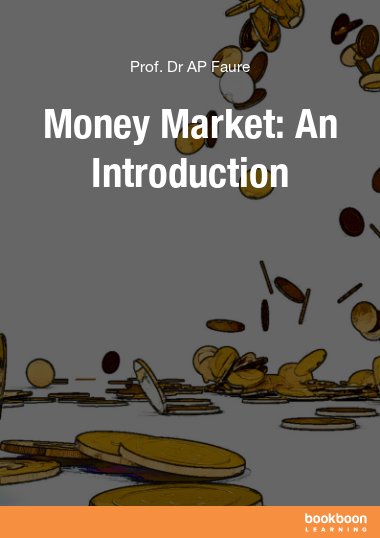The money market has traditionally been defined as the market for short-term marketable debt instruments, such as commercial paper (CP) and treasury bills (TBs). It is much more than this. It embraces all short-term lending and borrowing, marketable and non-marketable, and includes the significant interbank market. It is in this market that interest rates have their genesis. There are three interbank markets: one where the rate is set administratively by the central bank [the policy or key interest rate (KIR), aka bank rate, discount rate, repo rate, etc], one which does not have a rate (there are exceptions), and the other one where banks compete fiercely among one another for reserves (called federal funds in the US) in order to avoid borrowing from the central bank. The outcome of the latter is the bank-to-bank interbank market (b2b IBM) rate and it closely follows the KIR. All deposit rates follow the KIR and the b2b IBM rate, as does the banks’ prime lending rate (PR, a benchmark rate). PR is the target rate of monetary policy, as money (ie, mainly deposits of the private sector) creation is the outcome of bank credit extension (in the main). Thus, monetary policy is aimed at influencing the demand for credit and its outcome, money creation. This economically-significant process plays out in the money market.

Beschreibung
Inhalt
Bewertungen
- Context: the financial system
- Learning objectives
- Introduction
- The financial system
- Allied participants in the financial system
- Summary
- Bibliography
- Overview
- Learning objectives
- Definition
- Primary money market: supply of and demand for short-term funds
- Organisational structure of the money market
- Money (deposit) creation in the money market
- Interbank deposit / loan market
- Money market interest rates
- Money market derivative markets
- International aspects of the money market
- Economics of the money market
- Summary
- Bibliography
- Interbank market & monetary policy
- Learning outcomes
- Introduction
- Bank to central bank interbank market (required reserves) (b2cb IBM)
- Bank to bank interbank market at the final interbank clearing (reserve funds market) (b2b IBM)
- Central bank to bank interbank market (liquidity shortage) (cb2b IBM)
- The money market identity / analysis
- Bank to bank interbank market revisited
- Summary
- Bibliography
- Mathematics
- Learning objectives
- Introduction
- Time value of money concept
- Simple interest
- Compound interest
- Broken periods of less than a year (one interest payment)
- Discount
- Effective rate
- Interest-add-on securities
- Discount securities
- Treasury bill tender mathematics
- Bonds with longer than six months to maturity date
- Bibliography
- Deposit & debt securities
- Learning objectives
- Introduction
- Money market interest rates
- Deposit securities
- Debt securities
- Summary
- Bibliography
- Derivative instruments
- Learning objectives
- Introduction
- Forwards
- Money market interest rate future
- Interest rate swaps
- Options
- Derivatives on derivatives
- Summary
- Bibliography
- Endnotes
This book is so important for every new participant. It is very easy for the learner and it has all the info required for a new learner.
